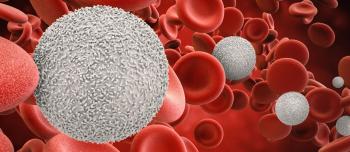In a newly published study, researchers at the Children’s Hospital of Philadelphia (CHOP) described how they utilized gene transfer technology to illicit the production of therapeutic levels of coagulation protein factor VIIa in rats with hemophilia A.
Factor VIIa is most commonly associated with its current commercial form. Recombinant factor VIIa (rFVIIa) was approved by the U.S. Food and Drug Administration in 1999 as a bypassing agent for the control of bleeding episodes in people with hemophilia A or B with inhibitors to factor VIII or factor IX. At the time of its approval rFVIIa represented a therapeutic alternative for hemophilia patients whose inhibitor response had rendered treatment with other available factor therapies ineffective.
The CHOP investigators are working to build on factor VIIa’s already established utility as a hemostatic agent that can stem bleeding, to one that can also prevent bleeding in both hemophilia A and B patients.
“Patients who develop antibodies to the coagulation factors usually prescribed for hemophilia have a complicated treatment,” said study leader Paris Margaritis, DPhil, a hematology researcher in the Raymond G. Perelman Center for Cellular and Molecular Therapeutics at CHOP. “A different factor, called coagulation factor VIIa, restores blood clotting when given after a bleed occurs, but we don’t know the target level of circulating factor VIIa that would prevent bleeds before they start. Our new preclinical results are the first to show target levels that could act prophylactically.”
Margaritis and his colleagues transferred the factor VIIa gene to the rats via an adeno-associated virus (AAV). Currently being investigated in multiple gene therapy trials for hemophilia, AAVs are delivery vehicles, or vectors, that carry the genetic codes that prompt the production of a targeted clotting factor protein. In this case, it triggered factor VIIa production that “simulated” prophylaxis. When the newly generated factor VIIa reached a certain level in the bloodstream, investigators reported that it reduced bleeding in the hemophilia A rats, while at higher levels, it achieved the elimination of bleeding events completely.
“For the first time, we have threshold levels of factor VIIa for prophylactic use,” said Margaritis. He added, “Because factor VIIa bypasses the need for factor VIII or IX, it should work in both hemophilia A and hemophilia B. Furthermore, it works whether or not inhibitors are present in the blood.”
The study was published in the journal Blood Advances.
Margaritis and his team will next look to translate these FVIIa prophylactic threshold levels from laboratory rats to humans, hence paving the way for potential clinical trials.
Source: ScienceDaily, April 15, 2019





